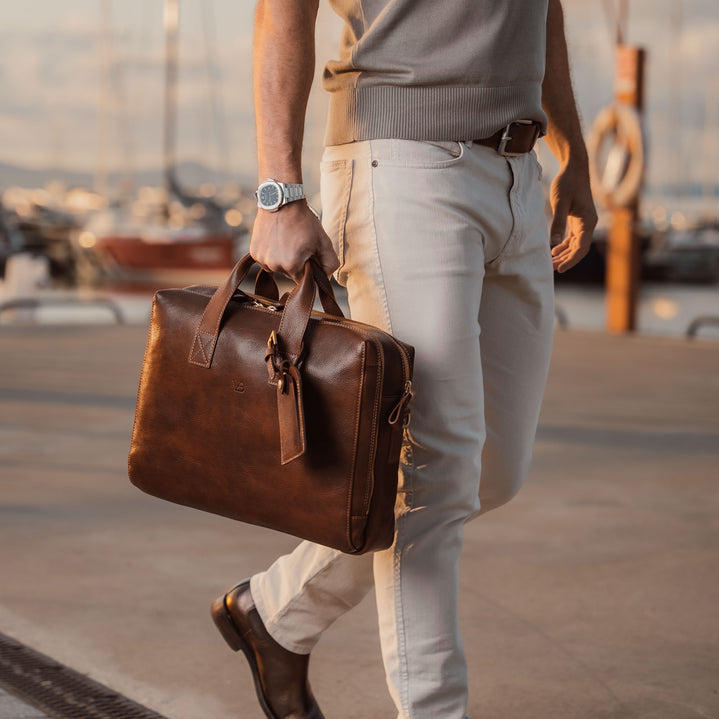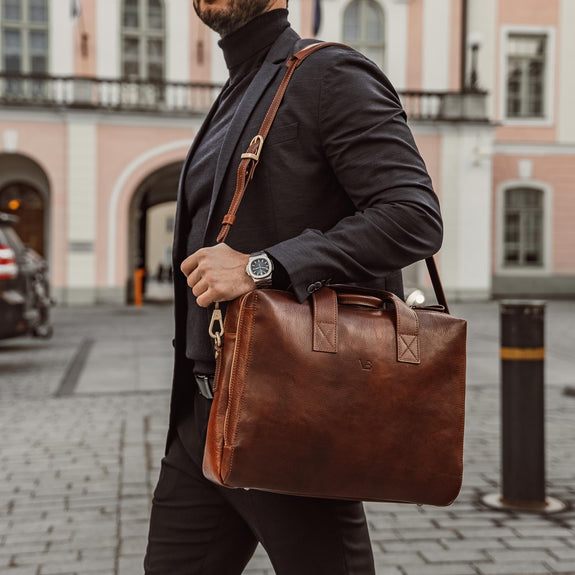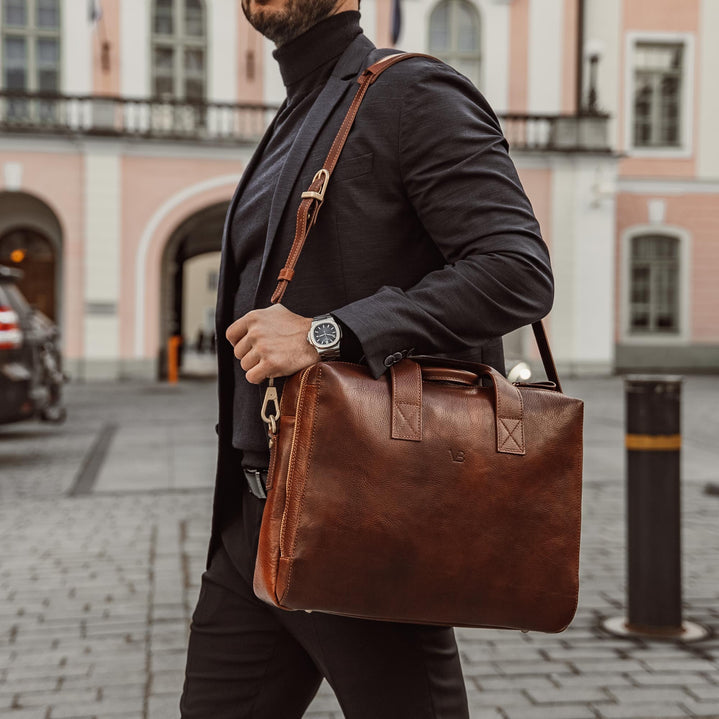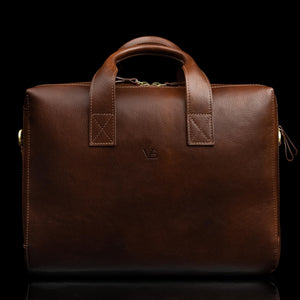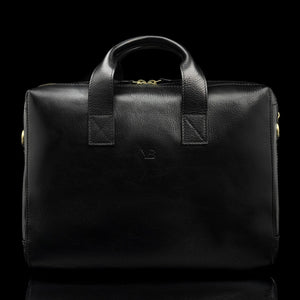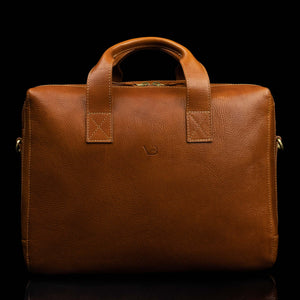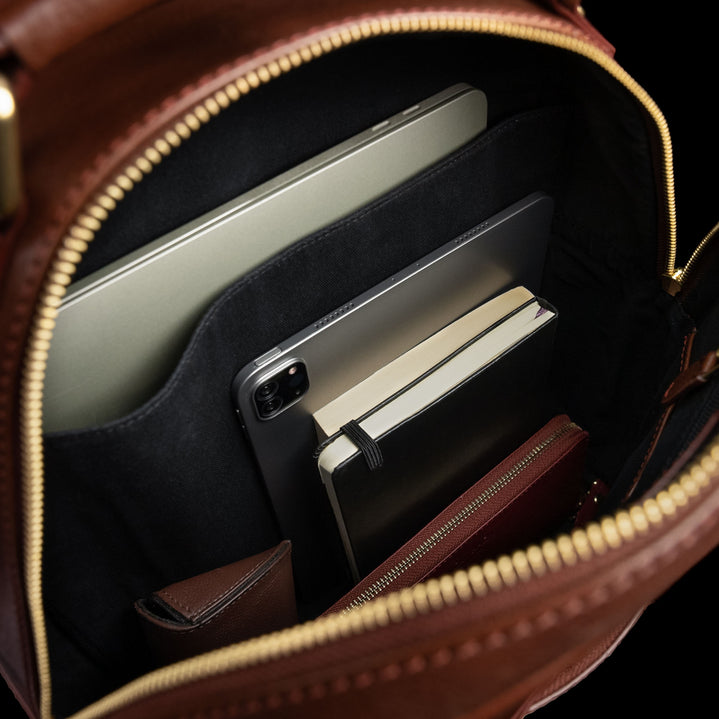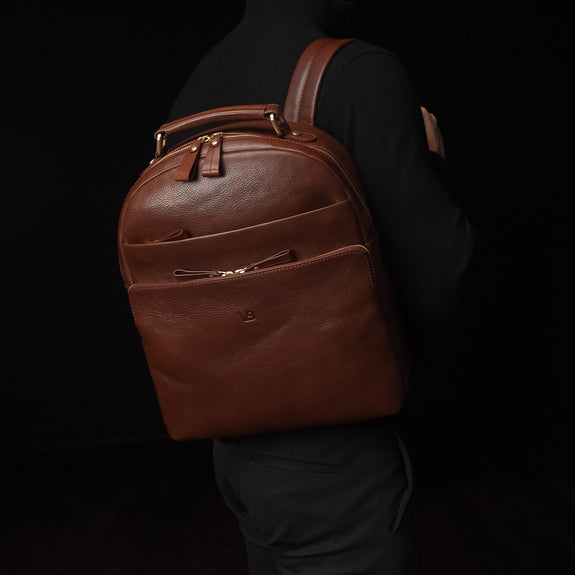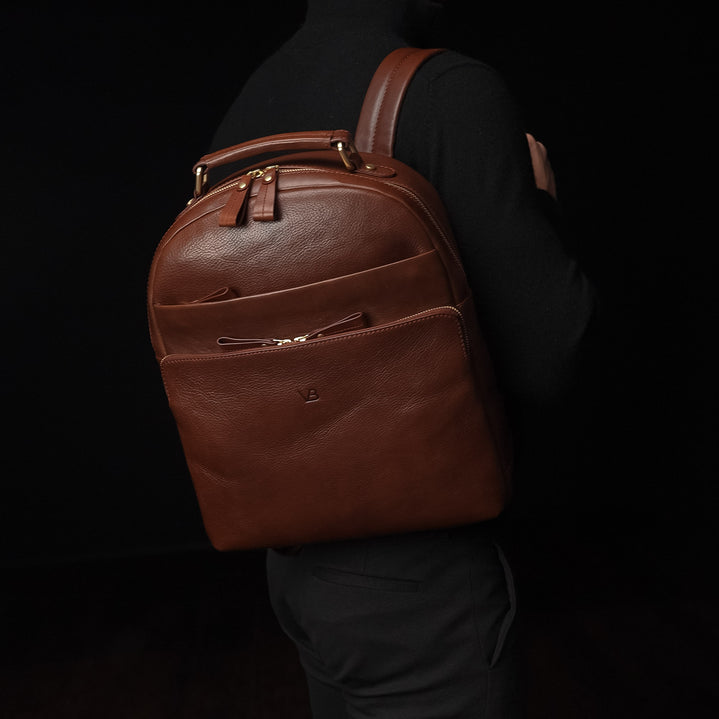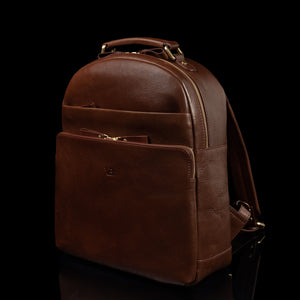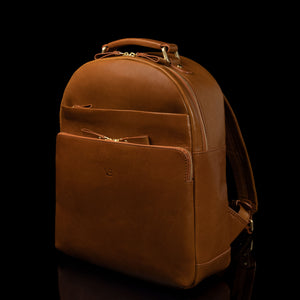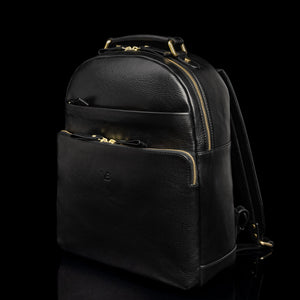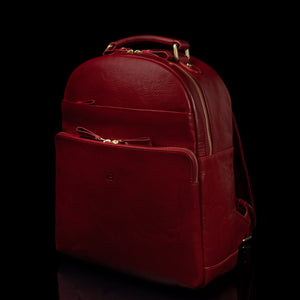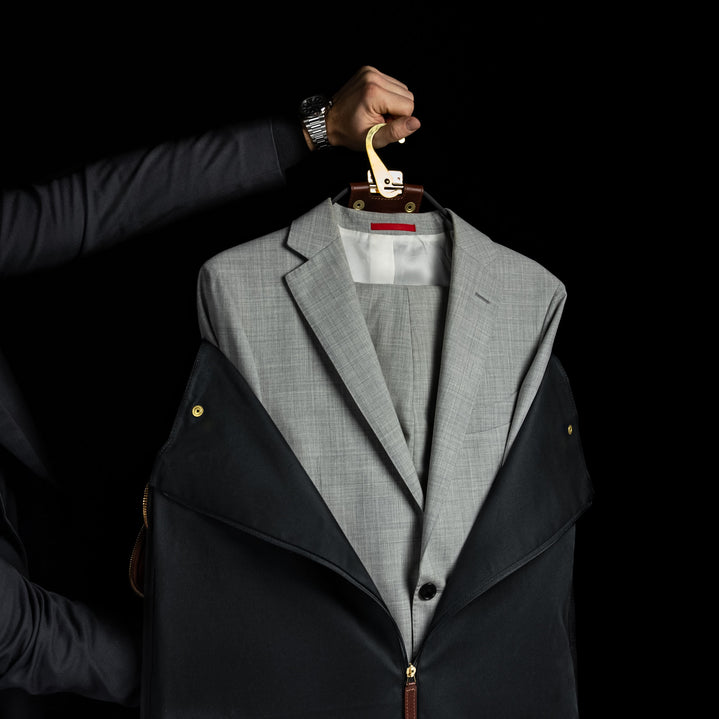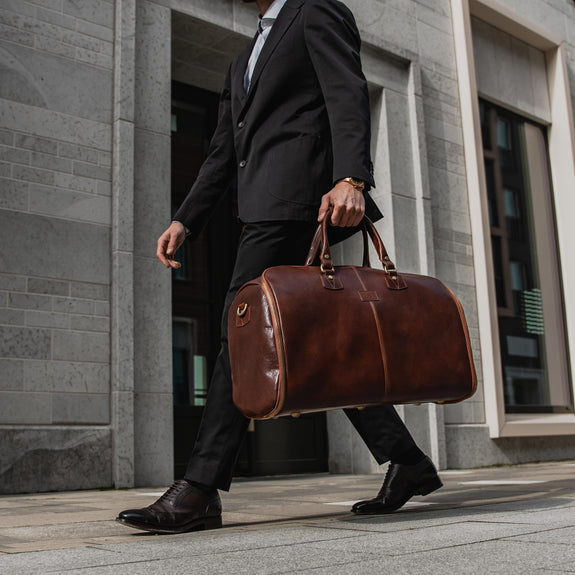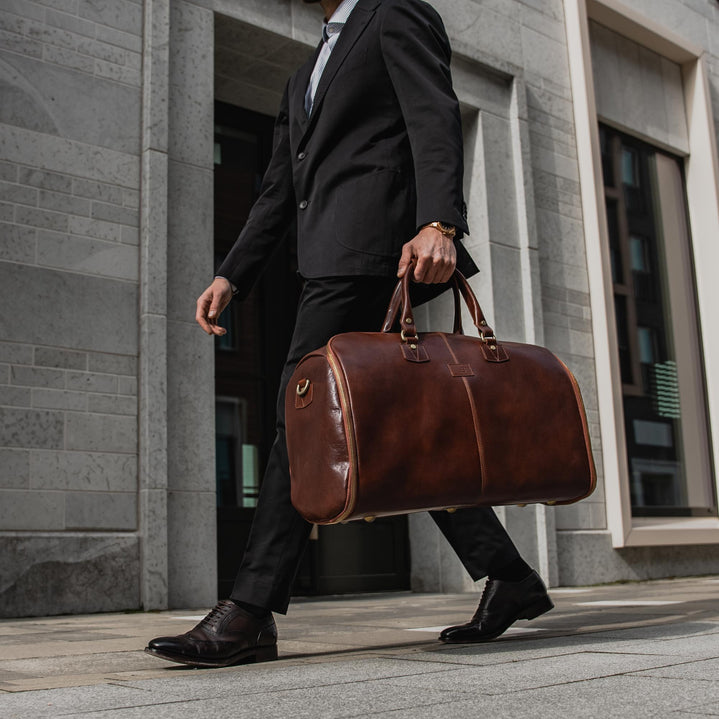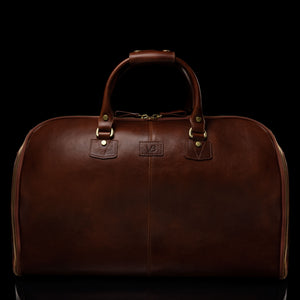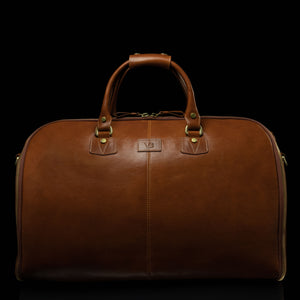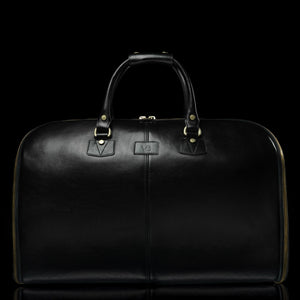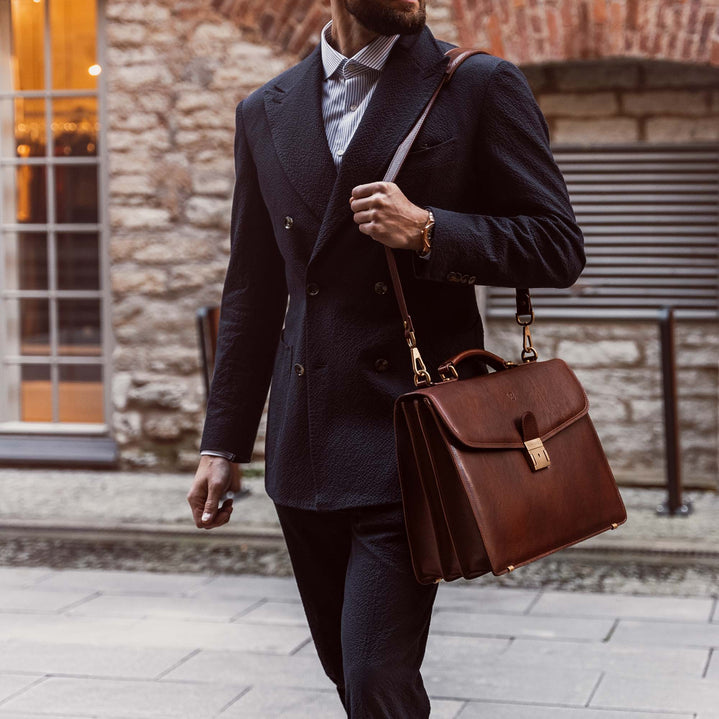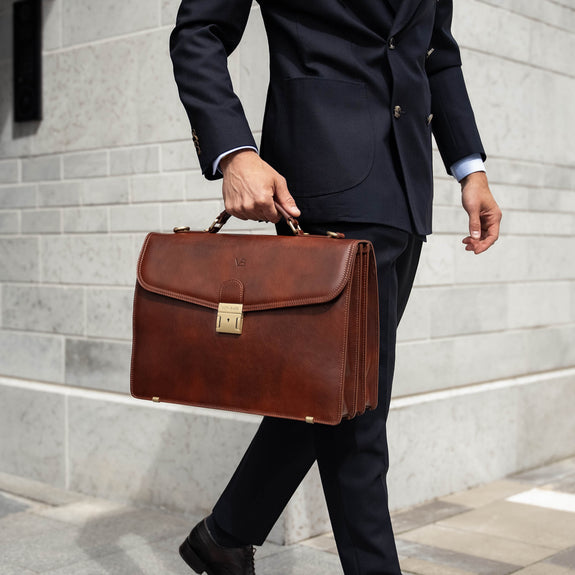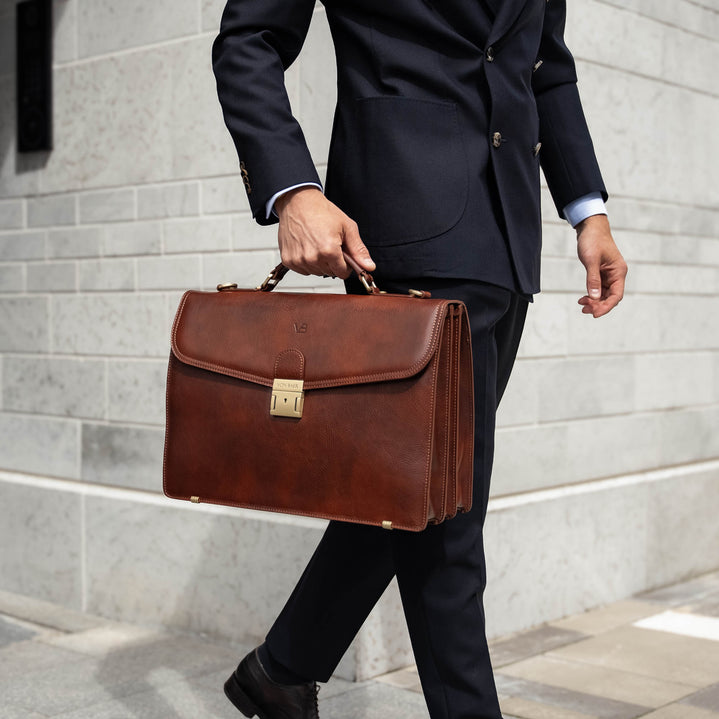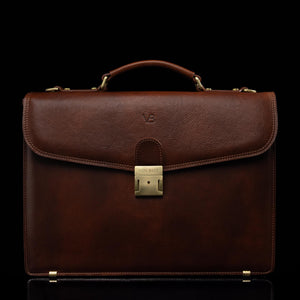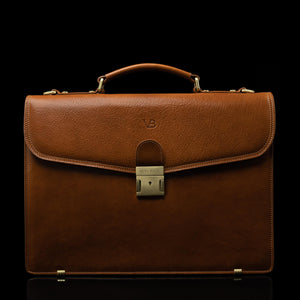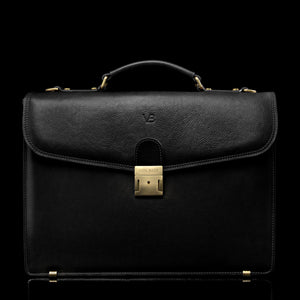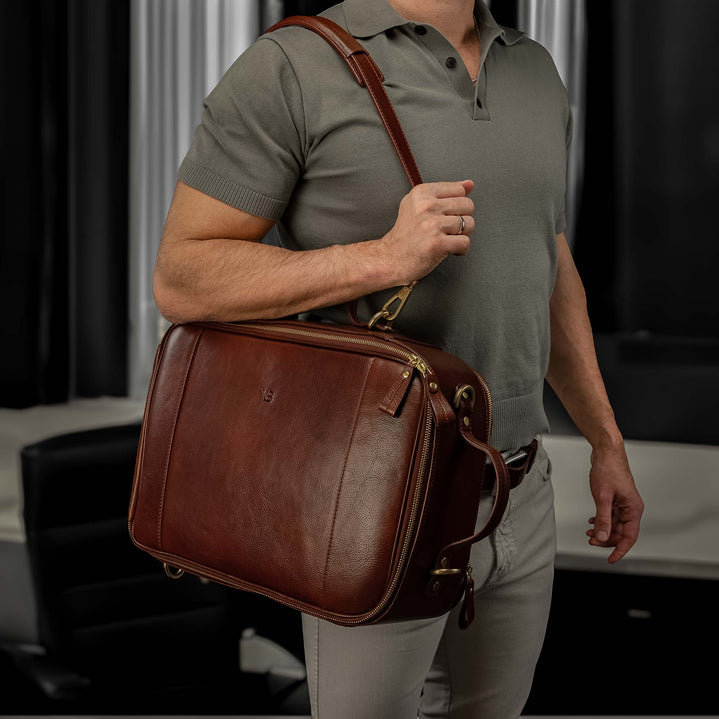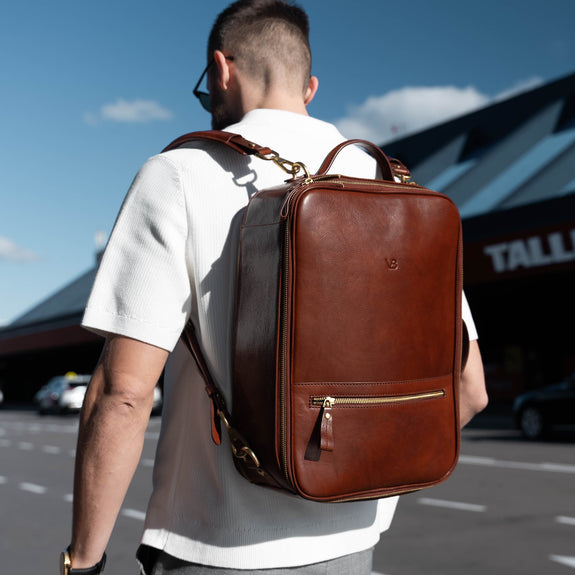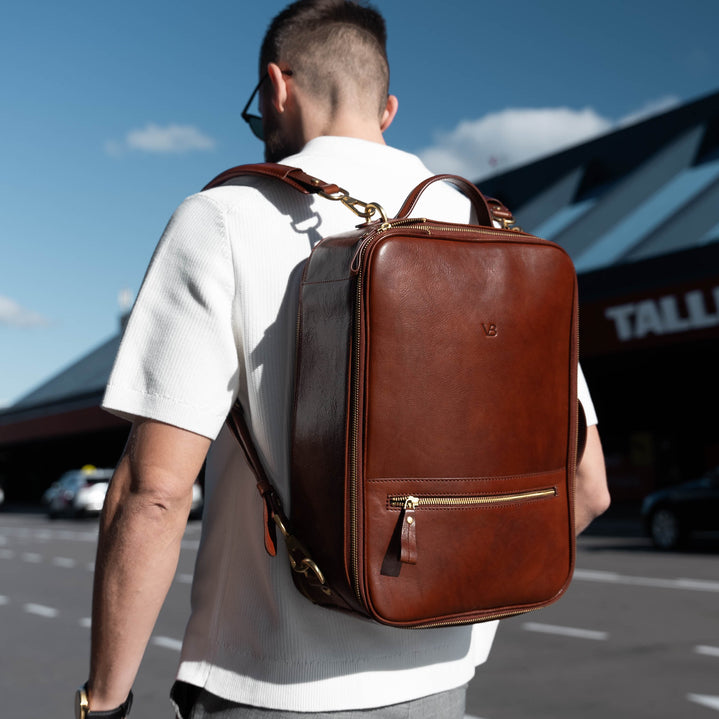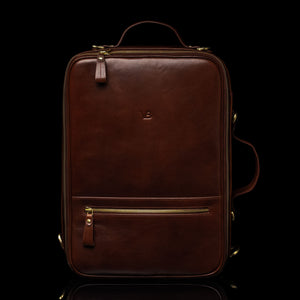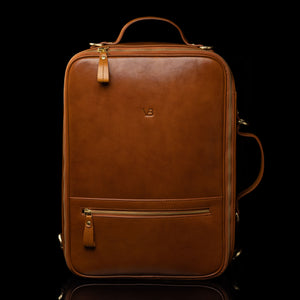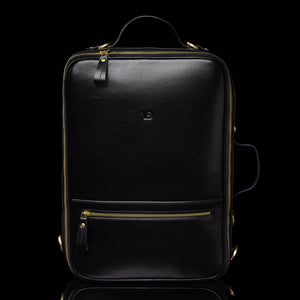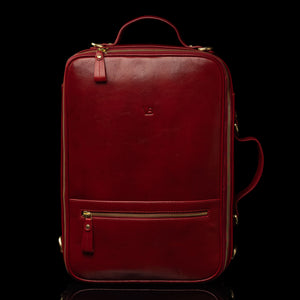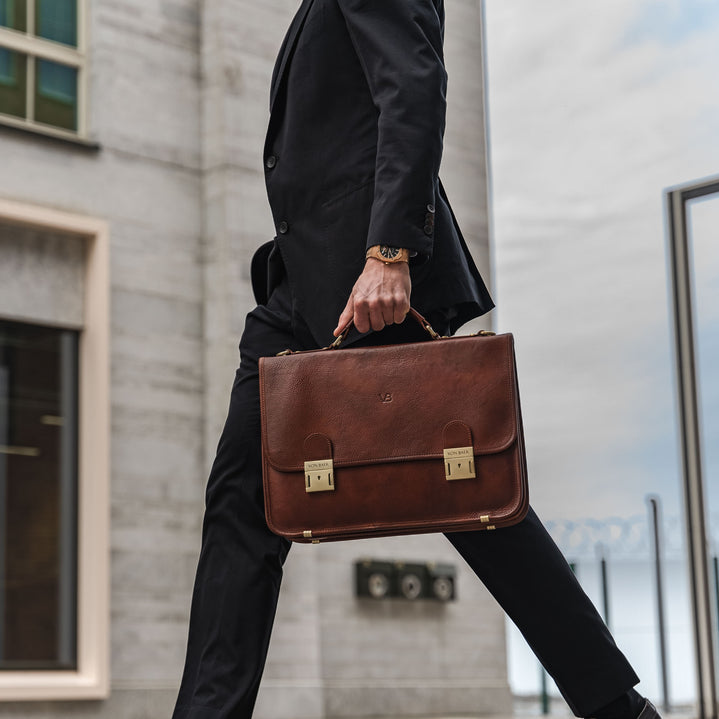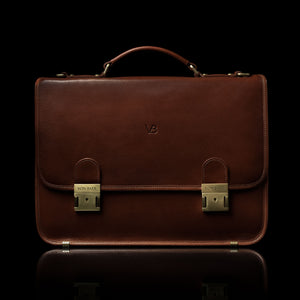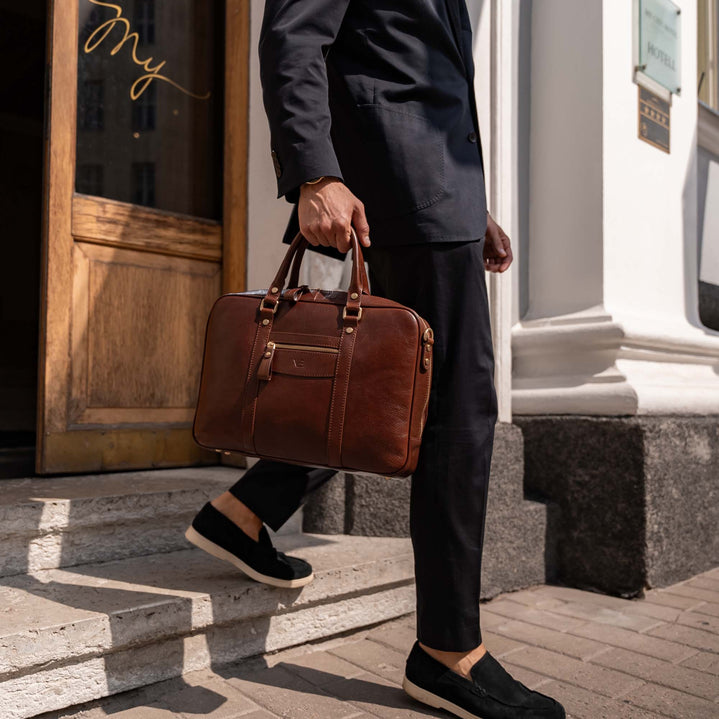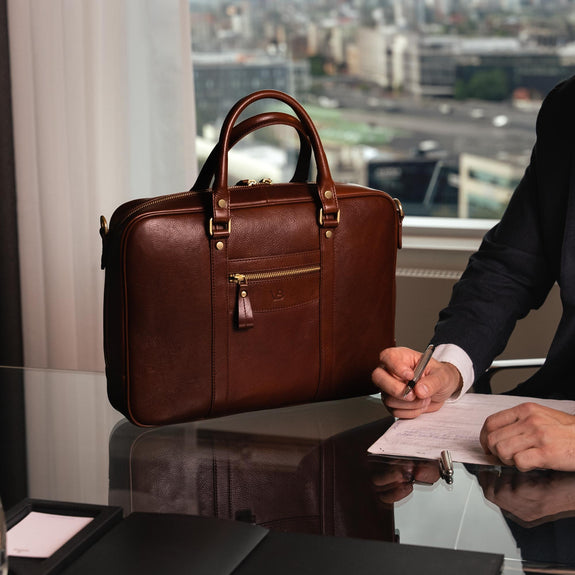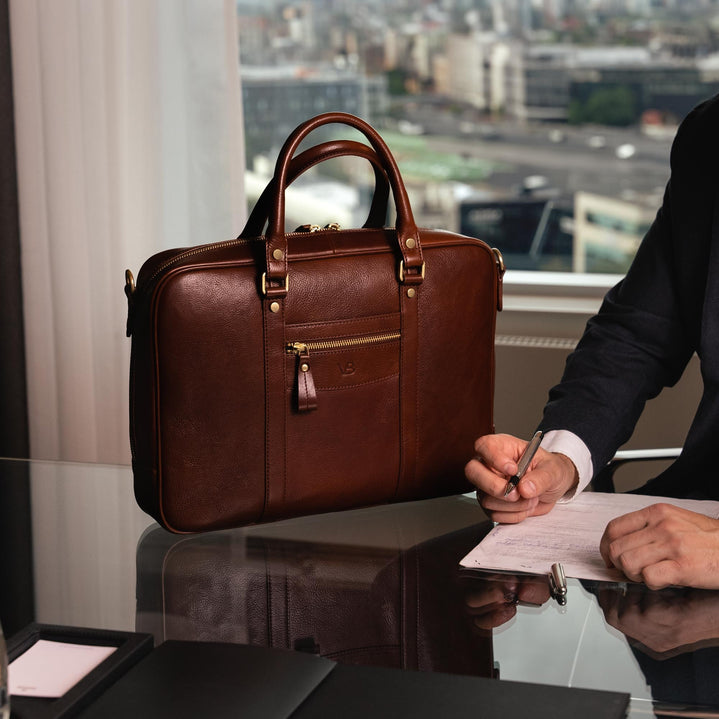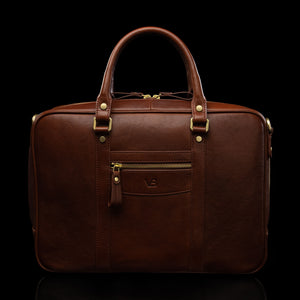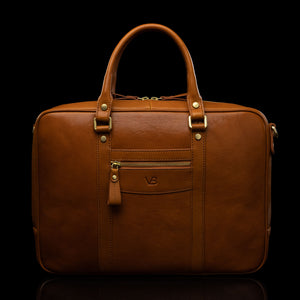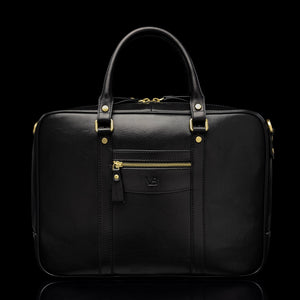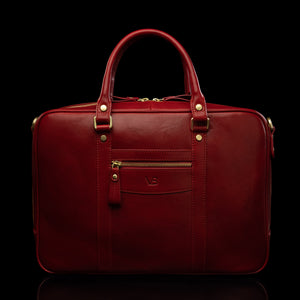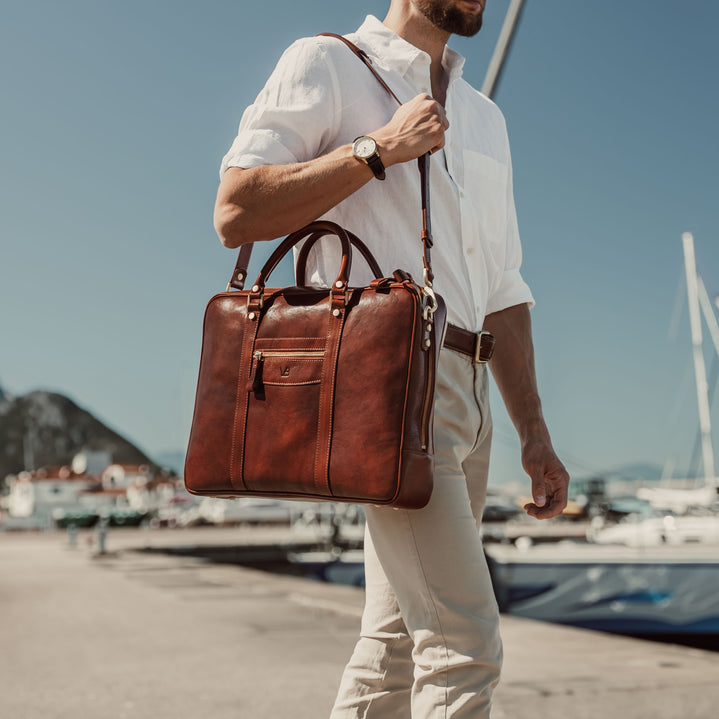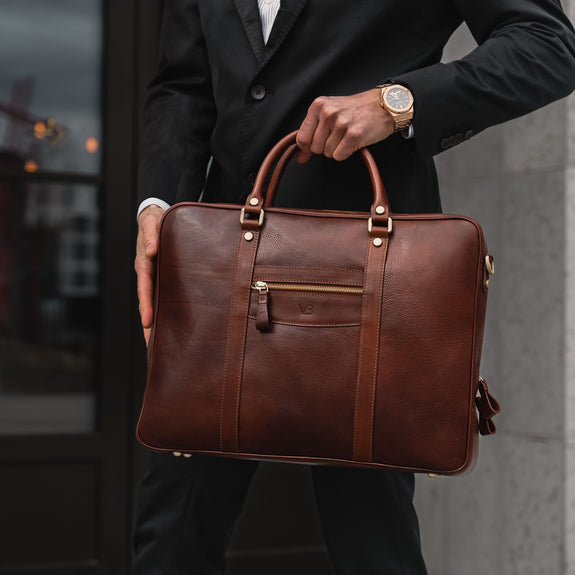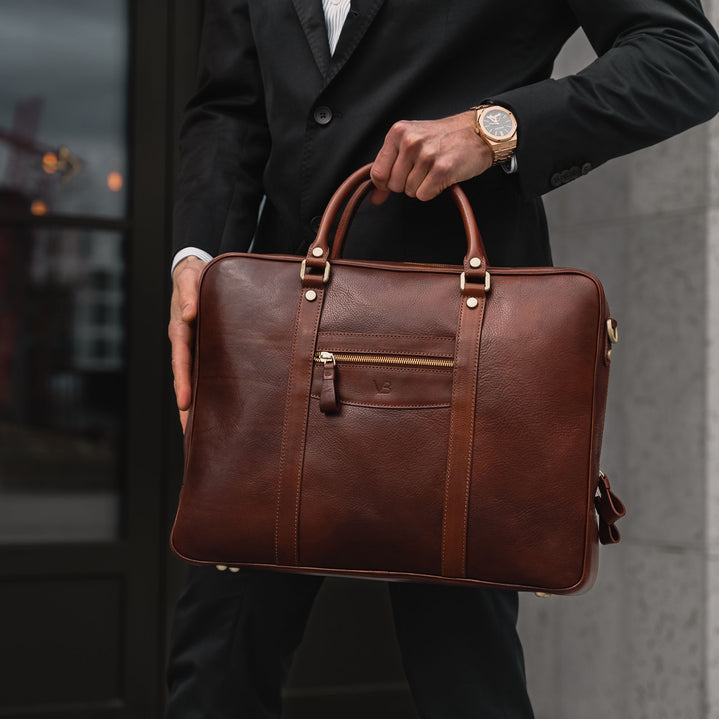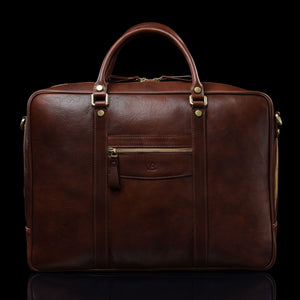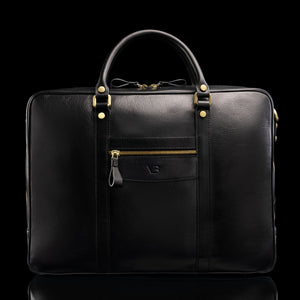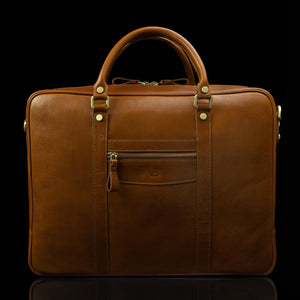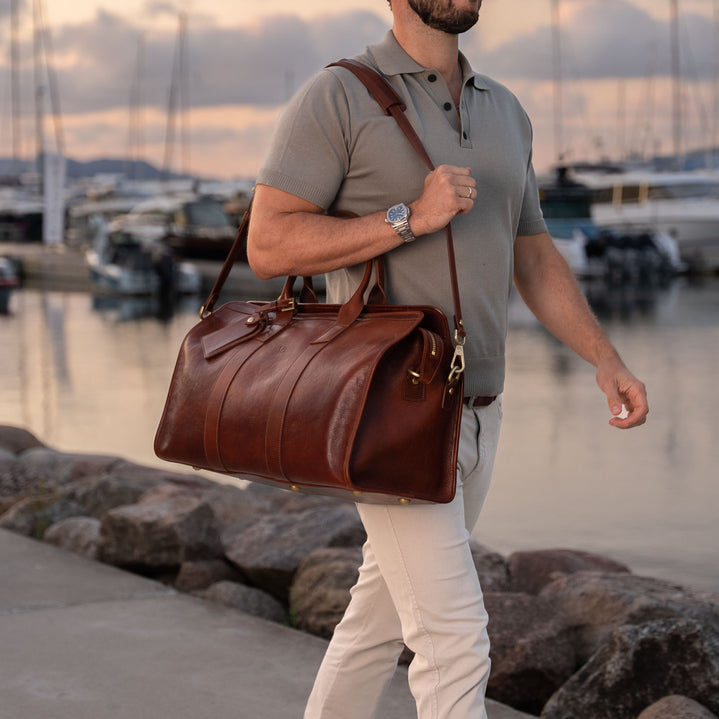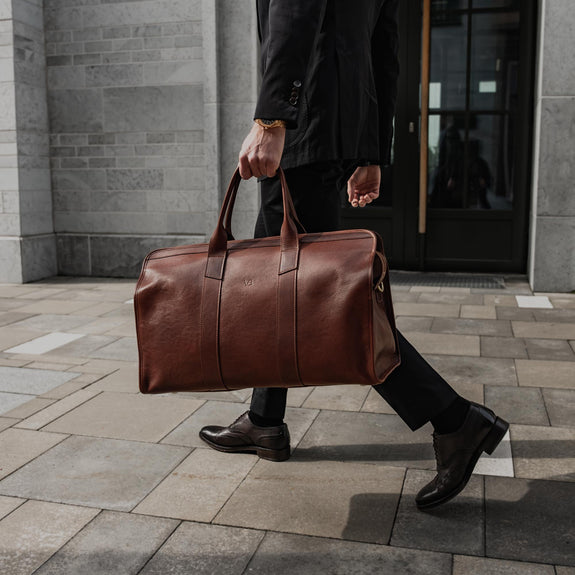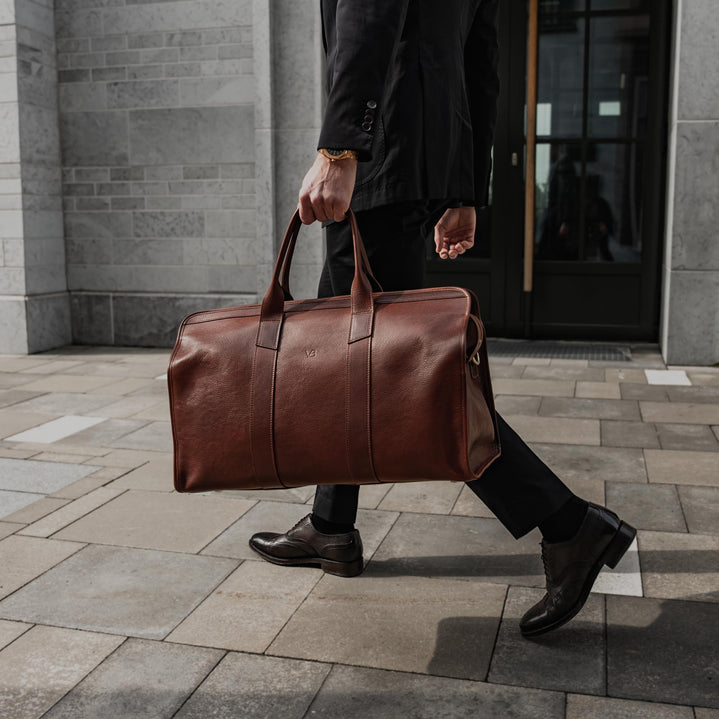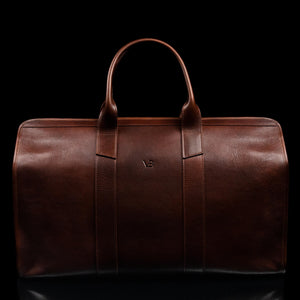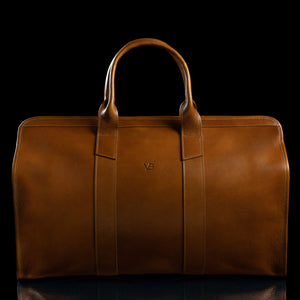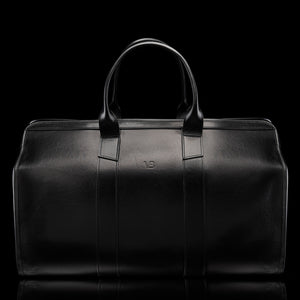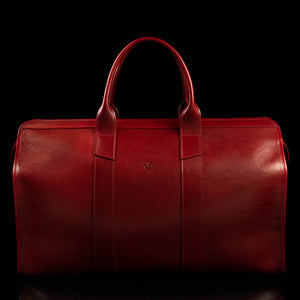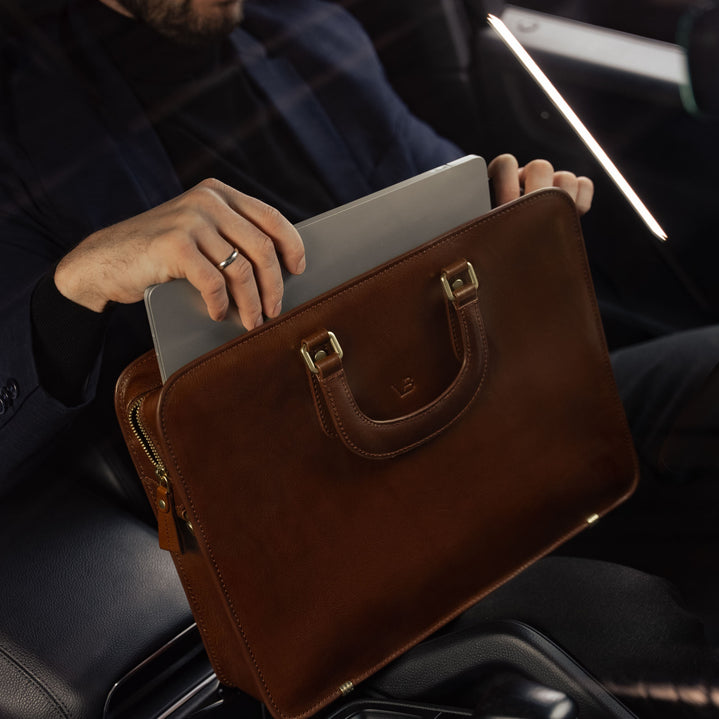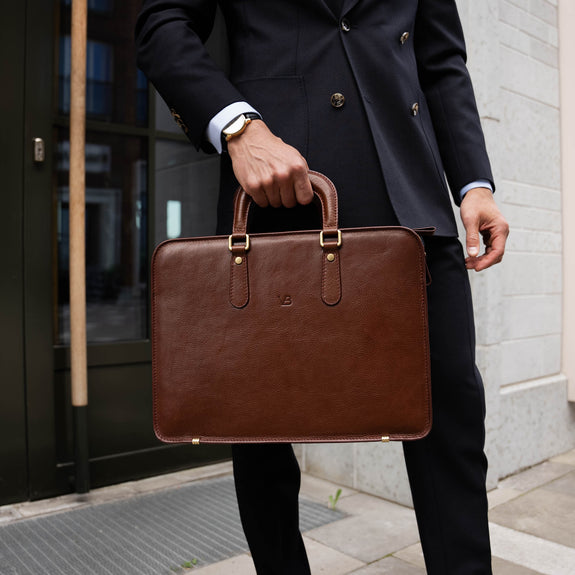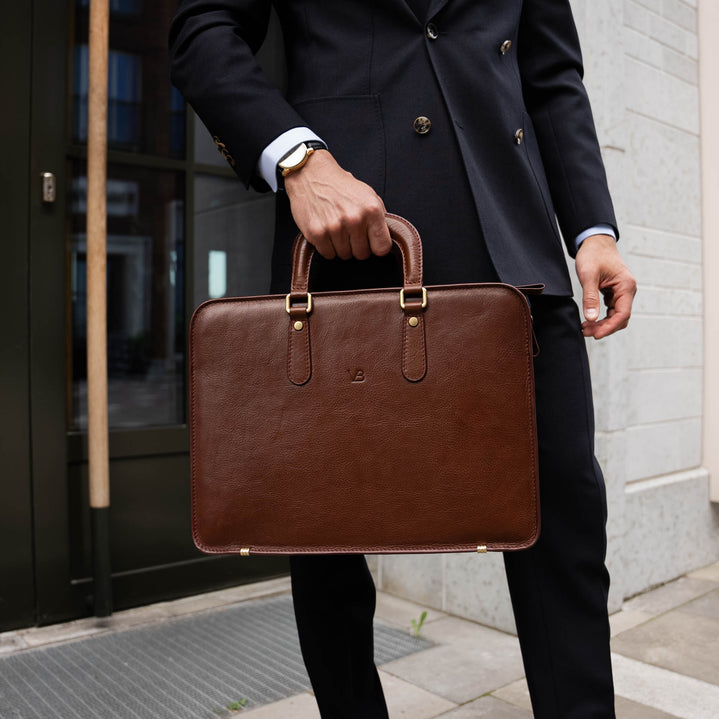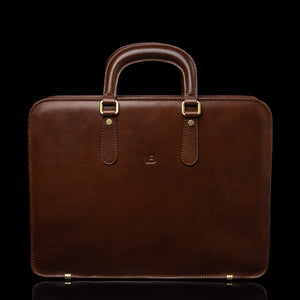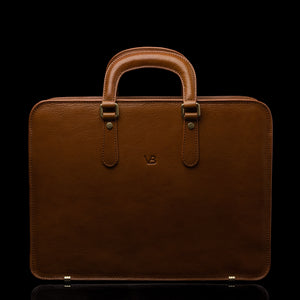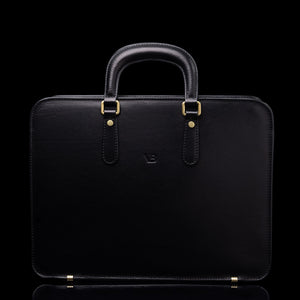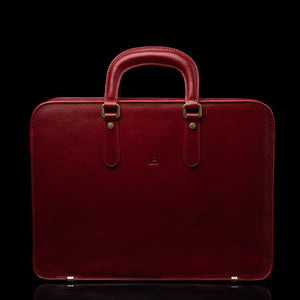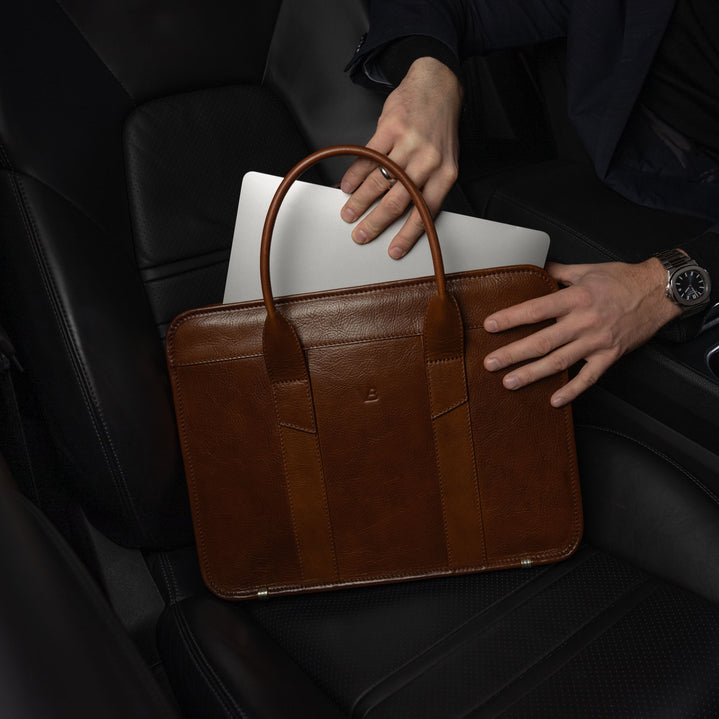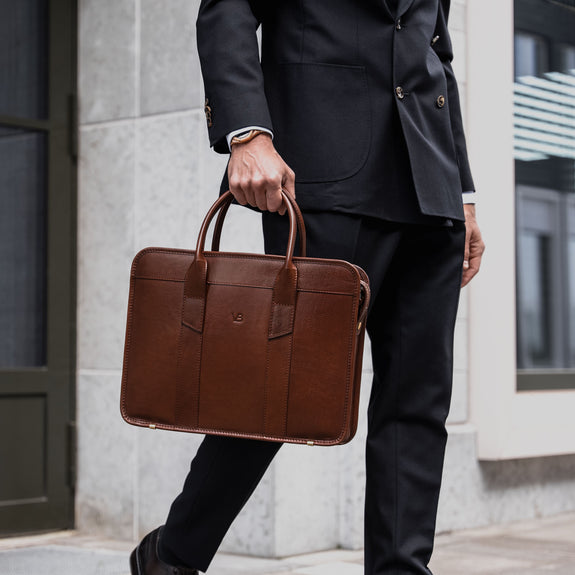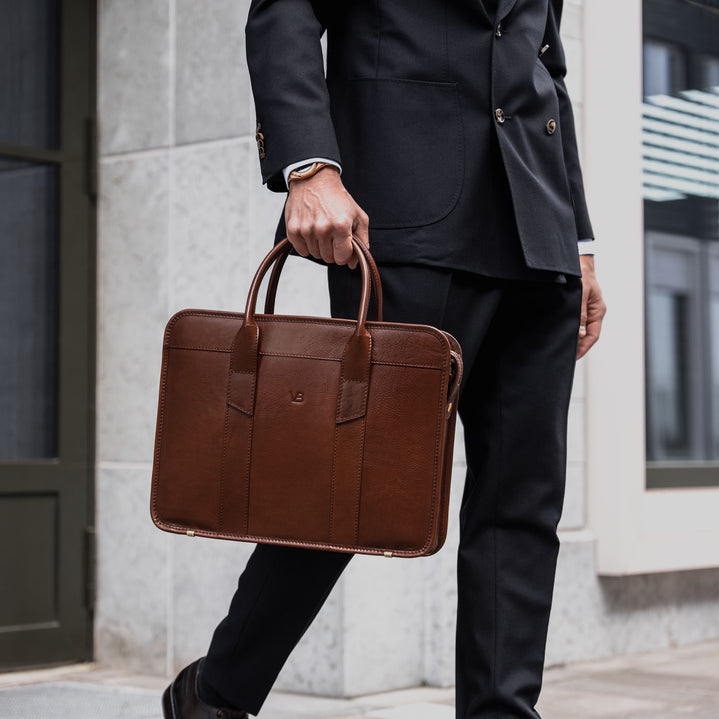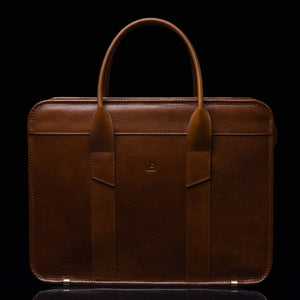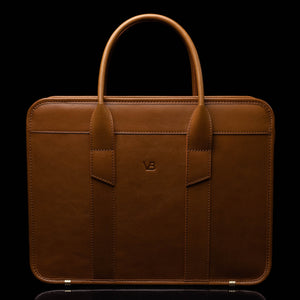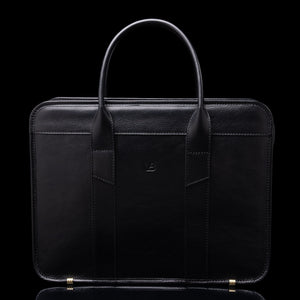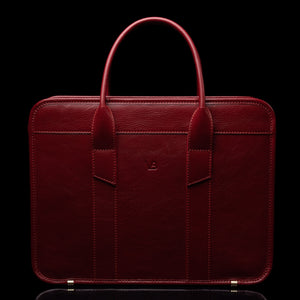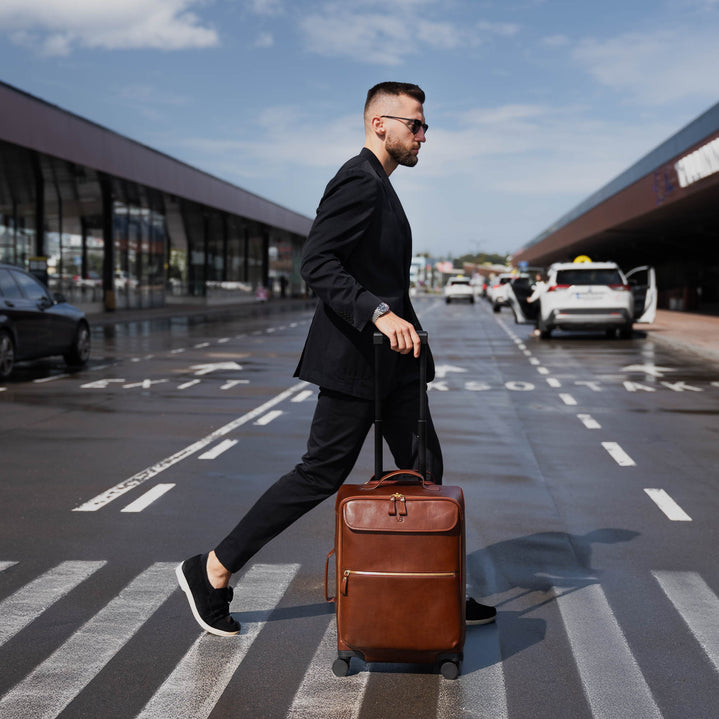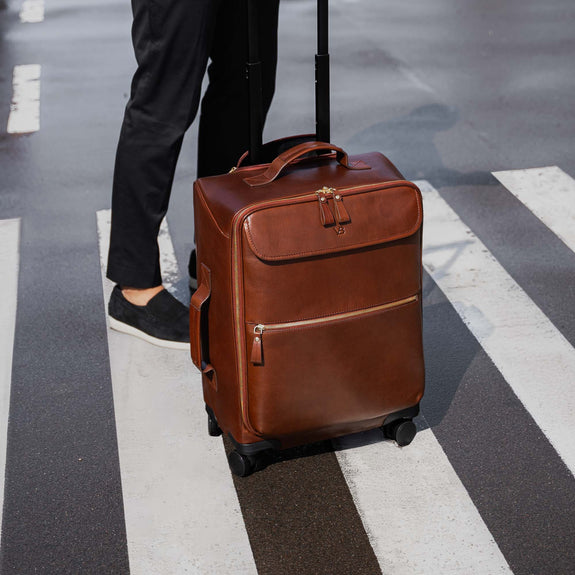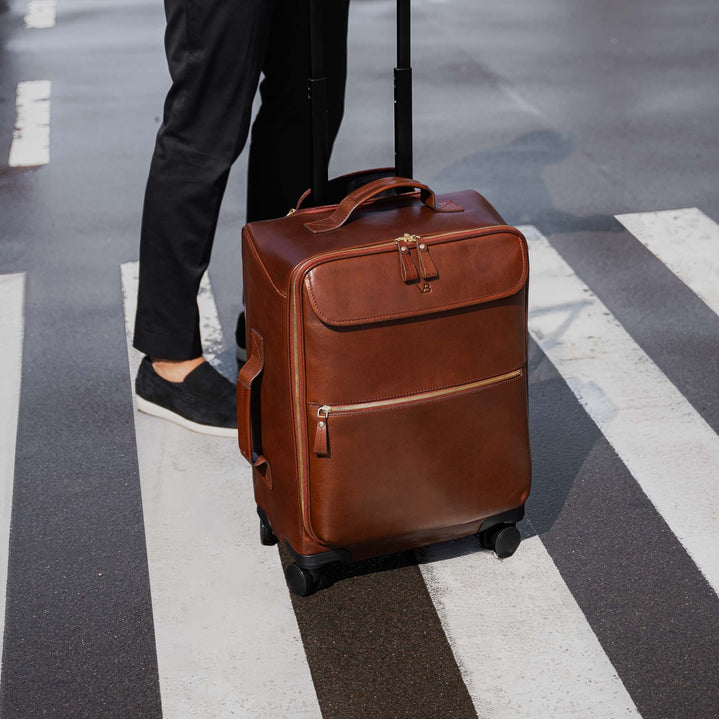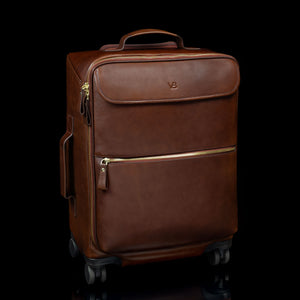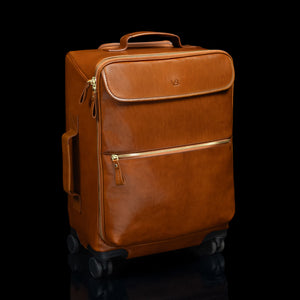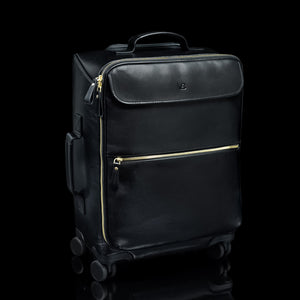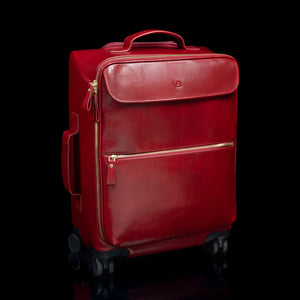Leather Bags for Male Private Equity Professionals
From the boardroom armour for top level board meetings, to a subtle (yet luxurious) backpack for the trip to the office - we've got you covered.
All handmade from the finest full-grain vegetable-tanned Italian leather, but with subtle branding for a quiet flex.
Essential
Modern Briefcase
$1,495
Liberty
Men's Leather Backpack
$1,495
Grand
Leather Garment Bag
$1,795
No.1
Men's Leather Briefcase
$1,795
10X
Leather Laptop Travel Bag
$1,695
No.2
Leather Messenger Briefcase
$1,595
City
Leather Laptop Bag
$1,495
City Large
Leather Laptop Bag
$1,595
Weekender
Men's Leather Weekend Bag
$1,795
Elegant
Slim Leather Laptop Bag
$1,395
Exquisite
Slim Leather Laptop Briefcase
$1,495
Voyager
Leather Carry-on Bag with Wheels
$1,995
AS FEATURED IN


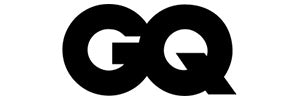

Why Choose Von Baer?

Expertly Handcrafted Leather Products

Full-Grain Vegetable-Tanned Italian Leather

Strong Hardware for a Lifetime of Use

Luxurious & Durable Cotton Lining

Personalize With Embossed Initials

Exquisitely Rich-Hued Leather for Refined Tastes
Buyer's Guide
1. When the Bag Has to Speak Before You Do: Craftsmanship - Branding

You know that feeling when you walk into a boardroom, or worse, an investor lunch, and something about the other guy's setup just... lands? Yeah. That. Sometimes it's not the watch or the shoes - it's the bag. Sounds shallow? Maybe. But we both know people read those signals faster than a term sheet.
So, here's the real question: are you chasing the logo, or are you buying the work? Because one whispers competence, the other shouts insecurity. Look for the nerdy details nobody tells you about - 8-10 stitches per inch, for starters. Get your thumb along the edge; you should feel that 1.5-2 mm smooth burnish where someone took their time, not a machine pass.
Ask the maker how it's stitched - hand-saddle stitching with two needles crossing every hole. If one thread breaks, the seam stays put. Machine stitching? Pull one thread and it's toast. Also, check the lining. Real bonded calf suede or cotton drill around 0.7 mm thick - anything else, like synthetic, will disintegrate in about three years if you're carrying a laptop daily.
Picture it: you're heading into a capital raise, someone clocks your bag - the rolled handle, seamless join, no flash branding. It's the quiet kind of status.
Oh, and the inside mark - tiny brass stamp, not a front-and-center emboss - is the insider's nod.
Spec-wise, here's what you want to see:
- Stitching density: 9 ± 1 per inch
- Edge burnish width: 1.5-2 mm
- Lining thickness: 0.7 mm minimum
- Thread: waxed linen, 0.6 mm diameter
Basically? If it screams, it's insecure. If it hums, it's heritage.
See our related guide for the best bags for investment bankers here.
Next up: how to stop your shoulder hating you halfway through a layover.
2. The Long Game of Leather: Durability - Carry Weight

Okay, so the big one - weight versus strength. You've felt it, right? That "I thought I bought a bag, not a kettlebell" regret halfway through a connection flight. Happens because people confuse heaviness with quality. Don't. What you want is tensile grain density - that sweet spot where the fibers hold under pressure without punishing your spine.
Von Baer’s leather, tanned in Tuscany using the Cuoio Superiore trademark process, is thick enough to last a lifetime but light enough to carry daily. English bridle leather (4-5 mm) is rock solid but weighs around 3 kg empty. Von Baer’s Italian vacchetta leather (2.2 mm) gives the same tensile strength at about half the weight, thanks to oil penetration that keeps the fibers supple.
Learn more about leather types here.
Hardware is where many brands cheat. Von Baer uses solid brass hardware, YKK Japanese zippers, and reinforced handle cores wrapped in dual-layer leather for longevity. No foam. No plastic. Just solid structure.
Grab the handle and squeeze. If it caves or feels hollow, foam. Dual-layer leather wrapped over a metal core? That's the real deal.
Numbers to hold onto:
- Carry weight: 9-10 kg max if you're hauling documents and a MacBook.
- Empty bag weight: 2.3-2.7 kg (ideal range for 15-16" briefcases).
- Hardware pull rating: 350 N minimum.
- Handle circumference: 100-120 mm for proper grip comfort.
Keep it alive with pH-neutral conditioner every six months. Beeswax, not petroleum. And for the love of all things hand-stitched - no plastic dust covers. Cotton only.
If it matures, it's worth it. If it sags, it's overbuilt or under-thought.
Next question: inside or out - what's actually running your day?
3. Command Through Order: Bag Structure - Flexibility

You ever see someone digging through their bag during a meeting? That chaotic scrabbling noise? You can hear disorganization. A good bag fixes that.
So - structured or flexible? This one's about rhythm, not fashion. A structured attaché has that hard spine, reinforced panels, doesn't change shape. Looks sharp every time you set it down. Great for meetings, signatures, anything formal. Soft-sided holdalls, though, or those semi-structured hybrids, are godsends if you're running between airports and offices with half your life inside.
You want bellows gussets, not flat panels - means the sides expand out instead of bulging like a shopping bag. Internal details matter too:
- Zipped privacy pocket with calfskin or Alcantara.
- Dual laptop divider, microfiber padded, no foam - it collapses under heat.
- Boarding pass sleeve, angled so you can grab it one-handed.
Numbers to check:
-
Main compartment: 60-70 mm depth.
-
Secondary: 40-50 mm.
-
Laptop slot: 370 × 250 mm minimum (for 16" screens).
-
Pocket spacing: about 35-40 mm vertically - lets your fingers find what you need.
Here's the test: load it with your actual stuff - MacBook, charger, documents - and stand it up. If it stays upright without leaning, you've got a keeper.
See our recommended cases for investment bankers here.
Order doesn't just look calm; it feels like control.
Now, let's talk conscience - the quiet kind that shows in your sourcing.
4. The Integrity Test: Heritage Craft - Ethical Provenance

Here's where it gets serious. You start earning real money, suddenly "where did this come from?" starts hitting different. The ethics bit isn't fluff - it's brand risk now.
Vegetable tanning takes 40-60 days in oak, chestnut, or mimosa pits. Natural. Slow. Biodegradable. You get that deep cognac tone over time. Chromium tanning? Two days. Cheap. Toxic. Ask who's making it.
The top-tier folks air-dry hides pinned to wooden frames - no heat ovens. You avoid that brittle cracking. It's literally stronger at the fiber level.
Request the traceability card. Real artisans have them - lists tannery, finishing house, maybe even the pit batch number. Sometimes you'll find a batch code hidden under an interior seam. That's heritage. That's what you get with a Von Baer bag.
A few numbers to chew on:
-
Vegetable-tanned: roughly 35% lower carbon intensity than chrome.
-
Water per hide: 2,000-3,000 L, versus synthetic coatings at 7,000+.
-
Life expectancy: 25+ years with care.
That's why owning one feels different. You know your piece wasn't just made right - it was made responsibly.
Next step: deciding how much of that virtue should actually be visible.
5. The Art of Being Noticed Only by the Right People: Bag Branding Visibility - Discretion

Alright, let's be blunt. Flash gets you noticed by the wrong crowd. Discretion? That's the real flex.
Visible luxury - contrast stitching, shiny chrome hardware, giant zips - reads like, well... Instagram wealth. Discreet luxury? That's tone-matched edges, satin metal, rolled handles stitched so clean you'd miss them. People who get it, get it. Everyone else just sees "nice bag."
Check the grain. Tilt it under light. If every pebble's perfect, it's embossed. Real full-grain has micro irregularities - tight and dense, not plasticky.
Color matters more than people admit. Espresso brown or oxblood? Timeless. Black? Safe but shows scratches. Navy or tobacco? Slightly offbeat but classy.
Oh - and photos under LED light or tungsten can change how gloss reads. Too much shine looks cheap. Ideal finish sits under 25 GU gloss units. Edge dye should hold at 60°C or it'll fade mid-summer. Handle clearance? Between 110-125 mm if you don't want sore wrists.
It's a strange art - looking expensive without looking like you're trying.
We have a related guide on the best bags to wear with a suit here.
Next: what happens when your bag starts aging - because it will, and that's the point.
6. Aging Gracefully or Simply Aging: Patina as Proof of Continuity

You want your leather to age the way you do - sharp, not tired. But here's the catch: not every patina's worth having.
Aniline finishes? Pure color in the hide, no coating. Ages beautifully, oxidizes, darkens about 10-20% in tone the first year. Semi-aniline gives you a paper-thin layer on top - more stain-resistant, still rich. Pigmented coatings? They'll survive spills, sure, but they'll never evolve. Dead surface.
Maintenance-wise, keep it simple. Conditioner every three months - Von Baer leather conditioner. Just a whisper. Too much oil and it blotches. Horsehair brush, not microfiber. Microfiber heats and leaves shiny patches.
If you scratch it, beeswax balm, small circle motion, buff dry. Don't hang the bag for days - it stretches. Store upright. Environment counts too: temp 18-24°C, humidity 40-55%, leather moisture around 8-12%.
Every few months you'll notice that change - edges darkening, surface glowing, corners softening. That's not damage, that's story.
Next up: the travel test - where weight meets life.
7. Traveling Without Compromise: Portability - Presence

Travel's the real stress test. Planes, lounges, meetings, rinse, repeat. You can't baby a bag - it's gotta move with you without losing its dignity.
For quick domestic runs, grab an executive brief under 10 cm depth - slides through bins, stands straight under seats. Long hauls? Go semi-structured tote - flexible gussets, extra give. Weekenders? Dual zippers, full wrap-around panels, detachable straps with closed-loop anchors so the metal never scrapes seat leather.
Keep weight under 2.5 kg empty. Use vulcanized fiber for base panels - won't crush like cardboard. Internal Alcantara lining fights humidity swings, saves electronics from condensation. Ask for collapsible walls with magnets so it holds form but packs flat.
Specs checklist time:
-
Carry-on: 55 × 35 × 25 cm.
-
Strap drop: 450-500 mm.
-
Hardware vibration tolerance: 20,000 cycles.
-
Volume: 15-20 L (brief), 35-40 L (weekender).
If it stands upright after a flight and still fits beneath the seat? That's how you know.
Elegance isn't weightless - it's balanced.
Next: why the last decision isn't about leather at all - it's about what you're really buying.
How Is Von Baer Leather Different?
Not all leather is the same.
Since 2015, we at Von Baer have dedicated ourselves to high-quality real leather.
Here's a 30-second summary of how to choose a better leather product:
- Leather comes in different grades: full-grain, top-grain, and split/bonded - which represent how much of the original product is used (less product used = cheaper).
- Full-grain is the best grade of leather you can buy: exceptionally durable, developing an elegant patina, and having that beautiful real leather smell.
- Cheaper grades are less durable, age poorly, and don't have that authentic scent.
- Leather is processed through "tanning", which makes it durable and water-resistant.
- The two main methods for this are "vegetable-tanning" and "chrome-tanning".
- Chrome tanning uses harsh chemicals that are bad for the environment and produce a worse quality leather.
- Vegetable tanning is the best method, being more eco-friendly, and producing leather with a better patina and scent.
That's why here at Von Baer, we only use full-grain vegetable-tanned Italian leather, sourced from the finest tanneries across Tuscany, Italy.
It ages beautifully over time, developing a unique patina, making it more durable and luxurious than lower-quality leather.
It's also why we developed the leather standards trademark Cuoio Superiore (meaning "superior leather" in Italian).
Learn more about Von Baer here.

